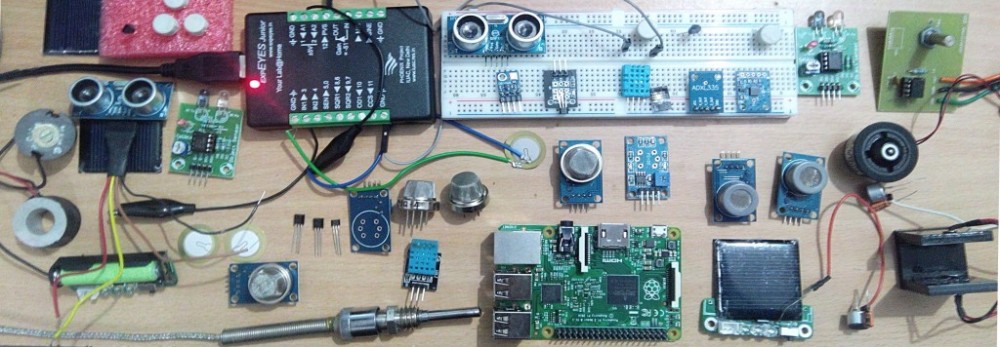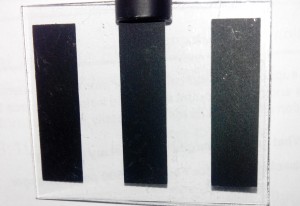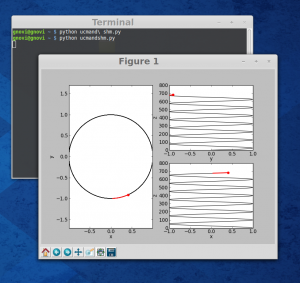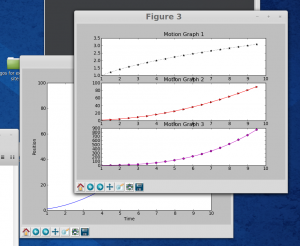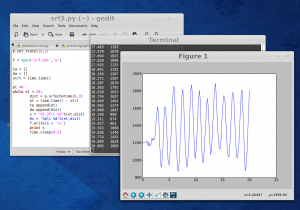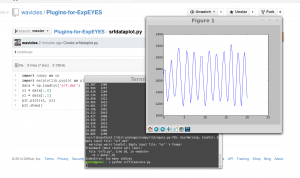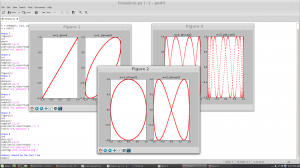Post Event Report
These are some of the words of praise that we got for SHD India 2017.
Mentors, hackers, students and parents everyone had a word of appreciation for us. These words gave us much needed energy to keep going and made us realize that together as a team we can do so much more and so many wonderful things.
This came as the biggest motivation and made us to dream of seeing this tiny sapling of SHD India grow into a splendid banyan tree.
After the spectacular success of the first edition of SHD India, we were determined to make it big in every way. We set goals, assembled a team, invited science lovers and hackers from all over India, plotted and planed workshops, exhibits, art and architectural installations, science demos, making aero-models, rockets and various other hacking activities.
We did all of this and we succeeded in making an exciting event happen. We succeeded because we had the support of almost 300 participants which includes high-school kids, science enthusiasts, hackers, mentors and our passionate volunteers. We succeeded because of our sponsors who had faith in us and we found partners who saw their success in ours. Finally, we succeeded because the PSF (Python Software Foundation) and ICFOSS (International Center for Free and Open Source Software) supported us in a big way.
Looking Back
SHD India 2017 gathered more than 80 hacker participants and more than 200 High-school, Pre-University and Undergraduate students around the mission of getting excited and making things with science. This amazing gathering had young scientists, engineers, computer programmers, teachers, nature lovers, hackers, makers, and grass-root innovators.
We had hackers coming in from Bangalore, Delhi, Mumbai, Pune, Hyderabad, Kerala, Bengal, Himachal Pradesh and many other places in India. Our mentors represent various institutions and communities in the field of hacker/maker movement like Hillhacks, Hackbeach, Anthill Hacks, Python Pune, PyLadies Pune, PyBelgaum, DGPLUG, Reserved-bit, C-spark Research, ICFOSS etc…
One of the important component of the SHD India is the lush green uncorrupted ambience of Sankalpbhoomi, our organizing partner. This amazing venue resembles an enchanting oasis, with a thick set of trees, sprawling lawns, and a large lagoon surrounded by picturesque expansive rock walls as backdrop, provided most memorable experiences to all the participants.
We had set up separate spaces for workshops, exhibits, hacker-space and other activities like science demos and Architectural installations.
Highlights of the activities
Day 0
- Setting up of stage, workshop areas and hackerspace.
- Training volunteers for soldering – Jithin B. P. had prepared a simple PCB layout with LEDs and potentiometers for volunteers to practice soldering. These volunteers will help school students in the soldering workshops in the coming two days at the event. The RBG LED badge kit is made with sponsorship from ICFOSS, Kerala. The design of the project is open sourced and is available here.
- Informal BoF session – in the evening everyone got together under one roof, and had a round of introductions followed by open discussions. After dinner, some of the hackers headed to the hackerspace (“cafeteria”) to test the Wi-Fi, and prepare for the next day’s hacks.
Day 1
- After registration and breakfast everyone gathered at the function hall for an informal inauguration.
- Introduction on Aeromodelling by Mr. Arjun Bilawar (retired trainer, NCC Karnataka and Goa Directorate). It had rained heavily last evening and hence a nearby playground was not suitable to demo the aeroplane. Mr. Arjun then took us to a nearby open area, and with a short runway, he was able to lift off the model plane, and flew it for few minutes to the loud cheers from the students.
- Hacking – . Siddhesh , Sayan, Saptak, Farhaan and other hackers began to build a 3D printer. Shreyas K was building an image detector to be used in his college to detect students jumping off the wall in his college premises. This was covered in the news, Tarun Bharat.
- Few students were creating 3D artefacts using the 3D pen from reserved-bit. Nisha Poyreka
 r was setting selfie photo booth, Hitesh Dharmdasani had brought his company’s (Informant Networks) Banana Pi based-router for hacking. Vaishali Thakkar was working on the Tessel board and Rust. Shakthi Kannan was setting up the Icoboard with Raspberry Pi 3 Model B to demonstrate chip design on free and open source hardware.
r was setting selfie photo booth, Hitesh Dharmdasani had brought his company’s (Informant Networks) Banana Pi based-router for hacking. Vaishali Thakkar was working on the Tessel board and Rust. Shakthi Kannan was setting up the Icoboard with Raspberry Pi 3 Model B to demonstrate chip design on free and open source hardware. - Python powered lab tools ExpEYES and SEELablet were setup at hackerspace for demonstrating data logging and were used by students from Kerala to make a python powered Bat detector.
- Biology and Geology Exhibits: In another sit out area, students had brought specimens from the labs to showcase them.
- Geodesic Dome : A team of architects created a geodesic dome that can be used as a makerspace. This hack activity attracted many hackers.
- Workshops: about 150 highschool students were divided into two groups. One group attended the soldering workshop in the function hall, and the other group participated in the science toys workshop in an open arena. The groups will swap the workshops the following day.
- Lightning Talks : In the evening many mentors presented interesting talks on python , embedded hardware, security, product design, mechanics of a bicycle, biogas, nursary rhymes for hackers etc.

Day 2
- Video conferencing session with Science Hack Day, San Francisco. Their event was scheduled on October 14-15, 2017 at the GitHub office. Ariel Waldman used the webcam to show around their hackerspace.
- The students then headed to their respective soldering and science toys workshops. Some of the toys and experiments were from Arvind Gupta.
- The hackers continued working on their projects. All the hacks had to be completed by noon, as they have to be demoed and voted for in the evening.
- Chemistry Demonstrations: many interesting demos were presented by chemistry teachers
- Rocket Session : After lunch, there was a rocket session where students launched rockets prepared by experts.
- We also had a group photo session, and headed to the function hall. All the hacks were presented to the students, and parents were also invited to attend the evening session. There was also an audience voting poll to choose their favorite science hack.
 Few students and mentors volunteered to capture the moments in their camera.
Few students and mentors volunteered to capture the moments in their camera.
SHD India 2017 Hack Awards
Following are the winning hacking teams selected by a team of judges. The winning teams were awarded special SHD India medals and a gift from Pankh Handicrafts.
- Best project with real life use case : won by Shreyas Kapale for Captive Camera
- Best project with social reality and degree of completion : won by Arpita and Suyash Khanolkar team for building the bamboo geodesic dome
- Project that required great persistence to complete : won by Farhaan, Saptak, Nisha and team for installation of 3D printer
- Public choice award : won by 3D scanner made by students of Jain College of Engineering
The Finances
We are happy to share a summary of our expenses.
Python is the language we love and we believe that it has the potential to change the way we learn and teach science. Therefore we tried to add the component of python in SHD India through python powered lab tools like ExpEYES and SEELablet and other code to learn activities. We are trying to have this as a regular activity at Makerspace Belgaum . Our efforts were supported by the PSF (Python Software Foundation) in a big way through sponsorship of $1600 (₹ 1,00,575 after bank fees)
This helped us to pay partially for hackers accommodation, venue, AV rental and to buy lab tools. These will be used at Makerspace Belgaum.
Another big support came from ICFOSS (International Centre for Free and Open Source Software) with the sponsorship of ₹ 50,000. This was used for making RBG LED badges for soldering workshop and to buy soldering tools. ICFOSS also helped us by sending Akshai M as a mentor and some useful swag for hackers.
We would like to thank our sponsors for the event without whom this conference would not have happened: PSF, ICFOSS, Reserved-bit, Vayavya Labs, Informant Networks, Polyhydron, Spica Hydraulicks, Entrepreneur’s Forum, and many other individuals who contributed in terms of time and money. Thank you for being a part of this mission to inspire our generation and create sparks for future ideas and grassroot innovations.
We accumulated a total of ₹2,77,575 in sponsorships and that was the major source of revenue for the SHD. From student registrations and volunteer contribution we collected ₹1,11,700 and from online resident hacker tickets we collected ₹57,465. Major portion of the income came from individual science enthusiasts.
The largest head for expenses was understandably the accommodation, venue, food and internet at ₹2,58,663. This took care of the accommodation in 12 cottages,conference venue, food and internet for the three days. We spent ₹53,498. on marketing, which included t-shirts, banners, certificates, badges, goodies, etc. For the equipment, science and soldering workshop kits and geodesic dome installation we spent ₹1,03,437 and ₹20,695 on travel support for mentors. The cost for travel was lower thanks to mentors and hackers pitching in from their own pockets. The balance amount of ₹10,447 will be used for buying storage racks for Makerspace Belgaum.
To conclude…
It was a satisfying experience for all of us involved in SHD India. Everyone from the organizing team, all the volunteers and mentors put their hearts into it. Everything went smoothly, it was collaboration at its best!
Going forward we felt we should have more hacks, better preparations for involving students into hacking activities. There is a lot of unexplored territory – artists, designers, astronomers, nature lovers, food hacks, crazy electronics and more. We wish to do more, do better…one step at a time, following the mission of Science Hack Day – “Making science disruptively accessible – empowering people from a variety of different backgrounds to explore, participate in, and build new ways of interacting with and contributing to science“.
SHD India has made us richer, not by money, but by bringing us close to passionate people from different walks of life, by givings us friends for life.
Credits: Thanks to Shakthi Kannan and Nisha Poyrekar for many of the sentences used in this post.
What Science Hackers Say about SHD India….
SHD India 2017
- Science Hack Day 2017, Belgaum blog post by Pooja Yadav
- Science Hack Day Belgaum 2017 blog post by Nisha (Reserved-bit Pune)
- Science Hack Day India, 2017 blog post by Saptak S
- Science Hack Day India 2017, Belgaum a blog post by Shakthi Kannan
Photo Albums
- SHD India 2017 by Sayan Chowdhury
SHD India 2016
- Science Hack Day, Belgaum 2016 blog post by Siddhesh Poyrekar
- Science Hack Day blog post by Nisha
- Science Hack Day, Belgaum, India 2016 blog post by Saptak S
- Science Hack Day India 2016 blog post by Kushal Das
Photo albums
- Flickr Album SHD 2016
- WebVR@Science Hack Day India Photos link by Lavish Agarwal
